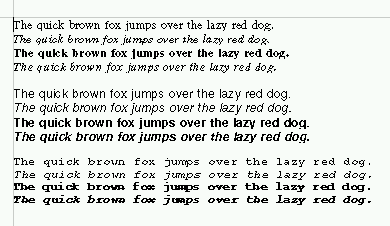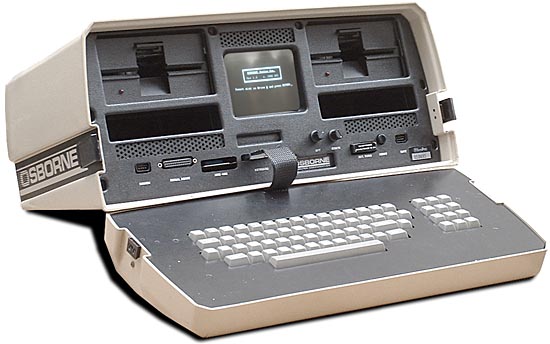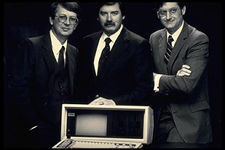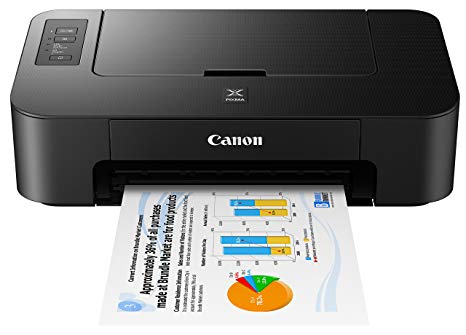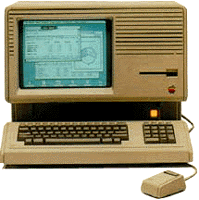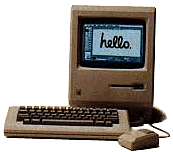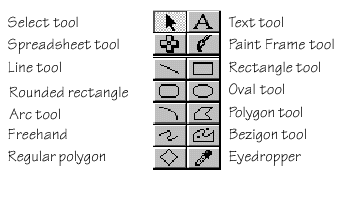| |
A Digital Timeline A History of Digital Technology 1980
to 1985 (added
May 10, 2002, |
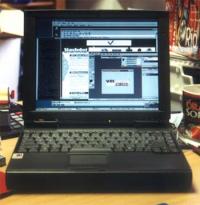 |
An attempt at charting the trajectory of digital technology, with special attention to graphical applications. Comments solicited, corrections gladly considered, links and images most graciously desired. (Special note: those attributed as inventors or creators more often were joined by many others, some named, some not. And dates are often only approximations.)
Word Perfect
Satellite Software & Corel
WordPerfect originated in the days when top-of-the-line printers were daisywheel impact devices requiring manual intervention to change fonts, and when on-screen displays were restricted to a single monospaced font. Particularly flexible dot-matrix printers included half a dozen fonts.
—Rod Smith
IBM PC with DOS & Intel
In the early part of 1980, IBM decided to create a microcomputer (up to this date, IBM produced only mini and mainframes). They didn't really know that they wanted and they didn't think for one second that producing microcomputers was a profitable business (who would have thought!)!
—OldComputers.com
Portable computer—
Osburne IAdam Osborne
Introduced at the West Coast Computer Faire in 1981, the Osborne 1 was the brain child of Adam Osborne, a computer columnist, writer, and engineer. It was co-developed with Lee Felsenstien, and Lee designed it. The goal was a truly integrated computer that could go wherever the user wanted to. The machine was shipped as a full package including all the hardware and software a user could need including: 64K RAM, Z-80 CPU, 5" CRT, two floppy drives, keyboard, serial ports, CP/M operating system, WordStar, SuperCalc, and two versions of BASIC: CBASIC and MBASIC. The machine also had the ability to connect with scientific equipment via a built-in IEEE-488 interface, and could run an optional external monitor via the built-in port. Not only was the machine complete, it was cheap - $1795.
— Justin Mayrand
Norton Utilities
Once upon a time there were lots of disk-repair utilities for the Mac. Symantec made Norton Utilities, Central Point made MacTools, and Fifth Generation made Public Utilities. MacTools and Public Utilities could scan disks during idle-time. MacTools had TrashBack, the best way to undelete files I've ever seen, and could boot itself from a RAM disk. What did Norton have? It had a bunch of components you don't find in the current release, including a Directory Assistance utility that improved Open/Save dialogs, a backup utility, and a utility for duplicating floppy disks. The last item is as obsolete as Fast Find, but I think many users would enjoy having the first two as part of the current Norton Utilities package.
—Michael Tsai
Adobe
John Warnock & Charles Geschke
One of
the brilliant engineers working at Xerox was John Warnock. He developed
a language called "Interpress" that could be used to control
Xerox laser printers. He and his boss, Charles M. 'Chuck' Geschke, tried
for two years to convince Xerox to turn Interpress into a commercial product.
When this failed, they decided to leave Xerox and try it on their own.
John
Warnock and Chuck Geschke named their company Adobe, after a little creek
that ran behind the house of Warnock in Los Altos, California. You sometimes
see it mentioned in wine guides on maps of Napa Valley where some of the
finest Californian wines are made.
— L. Leurs
Compaq
Rod Canion, co-founder
Rod Canion, Jim Harris and Bill Murto, founders
The 'sewing machine' was the very first Compaq computer.When this machine came out, there were no clones. An IBM compatible had the three magic letters on the case. Period. Part of the reason was that IBM had published the source code for their BIOS (basic input/output system)so that they could claim that anyone who brought out their own BIOS had infringed on IBM's copyrights and would have to stop.
—Paul Braun
Apple Mac malware: A short history (1982-2011)
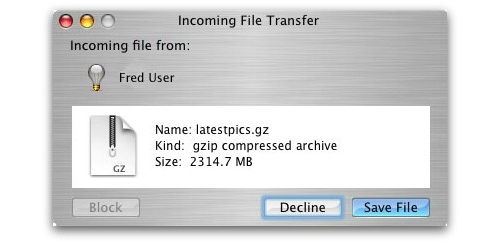
Malware on the Mac is a subject which raises strong emotions. There are some who believe that the problem is overhyped (or even non-existent!) and others who believe that the malware problem on Macs is underestimted by the Apple-loving community.
—Graham Cluley
Microsoft Word
Bill Gates at al
War
of the Words: Microsoft Word versus WordPerfect
Dec. 1982
Satellite Software International ships WordPerfect for DOS for $500.
Apr. 1983
Microsoft introduces Multi-Tool Word for DOS.
Nov. 1983
WordPerfect 3.0 for DOS ships at $500. Microsoft releases Microsoft Word
1.0 for $375.
—Marquette University
Inkjet Printer
Canon, Epson, et al
The history of currently popular ink-jet printing, or, scientifically speaking the technology of nonimpact high-speed ink spotting through microscopic openings onto the solid carrier for producing an image on the surface of it, is more than a decade long. But the origin of this technology is actually the research of the Frenchman Felix Savart, who in 1833 have discovered and noted the uniformity of liquid drops formation when delivered through a narrow opening.
—dimasio.com
Graphical interface with computer— Lisa
Apple
Named for one of its designer's daughters, the Lisa (pictured below left) was supposed to be the Next Big Thing. It was the first personal computer to use a Graphical User Interface. Aimed mainly at large businesses, Apple said the Lisa would increase productivity by making computers easier to work with.
—Glen Sanford
Macintosh computer
Apple
Released with much fanfare in January of 1984, the Macintosh was the
first affordable computer to include a Graphical User Interface.
It was built around the new Motorola 68000 chip, which was significantly
faster than previous processors, running at 8 MHz. The Mac came in a small
beige case with a black and white monitor built in. It came with a keyboard
and mouse, and had a floppy drive that took 400k 3.5" disk—the
first personal computer to do so. It originally sold for $2,495.
— Glen Sanford
Domain name system
Paul Mockapetris
The purpose of the domain name system is to allow any computer on the
Internet to figure out what IP address (for example, 216.112.23.10) corresponds
with a particular computer hostname (for example, "www.ahref.com"),
and also what hostname, if any, corresponds with an IP(internet protocol)
address. Your computer needs to know remote computers' IP addresses to
figure out how and where to send things like email messages and requests
for web pages.
—ep Productions, Inc
AppleWorks
Apple
In 1984, the same year that the Macintosh was introduced, Apple Computer released the first program called AppleWorks. (Select this link for more information on AppleWorks for the Apple II). It was a strange time for consumers: the Macintosh was newer, had fancy fonts and styles, had a wonderfully clear display, but all the software that was available for it was a simple word processor called "MacWrite" and a paint program called "MacPaint." On the other hand, AppleWorks made the old Apple II more capable than the Mac, since it combined a word processor, a database, and a spreadsheet, and it let you create in any of those "modules" and move the information into either of the others. It was, in other words, an integrated program.
—Gareth Jones
Excel
Microsoft
Excel was originally written for the 512K Apple Macintosh in 1984-1985. Excel was one of the first spreadsheets to use a graphical interface with pull down menus and a point and click capability using a mouse pointing device. [This] was easier for most people to use than the command line interface of PC-DOS spreadsheet products.
—D. J. Power
Postscript
Adobe
To appreciate PostScript, you have to know how the market worked before
it became available. In those days, if you needed typesetting equipment,
you went to Acme Typesetters, and they would sell you an Acme system with
an Acme output device. Then you would follow at least two weeks of training
to learn how to use the system. The Acme system would be incompatible
with equipment from any other manufacturer. In most cases, it would even
be difficult or impossible to exchange data with other systems.
If you owned a personal computer, you could hook it up to a dot-matrix
printer that would output low quality bitmap character. Graphics could
be done but the quality was only acceptable to the nerds that bought computers
in those days.
—L. Leurs
Page Maker
Paul Brainard & Aldus
Aldus PageMaker is released for the Macintosh in July and desktop publishing is born. Because of advances in printing technology and the Macintosh WYSIWYG (what you see is what you get) operating system, publishers can now arrange text into columns and headlines and move their text around the page. Users can also easily incorporate graphics into their page. Soon the days of X-Acto knives and hot wax were gone forever as publishers began to create their pages on screen and print. This is also very cost effective for professional printers who no longer needed expensive typesetting, drawing and page layout equipment.
—Melissa Creech
Windows 1.0
Microsoft
Microsoft first began development of the Interface Manager (subsequently renamed Microsoft Windows) in September 1981. Although the first prototypes used Multiplan and Word-like menus at the bottom of the screen, the interface was changed in 1982 to use pull-down menus and dialogs, as used on the Xerox Star. Microsoft finally announced Windows in November 1983, with pressure from just-released VisiOn and impending TopView. Windows promised an easy-to-use graphical interface, device-independent graphics and multitasking support. The development was delayed several times, however, and the Windows 1.0 hit the store shelves in November 1985. The selection of applications was sparse, however, and Windows sales were modest.
—pcbiography.net
AppleWorks & Claris
Rupert Lissner
After seeing the Office System on the Lisa computer, Lissner conceived the idea of a single program that would put word processing, database, and spreadsheet capabilities together, and run on an Apple II. It was originally called "Apple Pie", and he began work on it in 1982. Lissner took two years to complete his program, and did it entirely in assembly language to achieve better speed. He wrote versions of the program to work on both the Apple II and Apple III computers, making use of the same filetypes and data structures. Apple Pie files created on an Apple II could be used on an Apple III, and vice-versa.
—Steven Weyhrich
| General references | Computer Technology Timeline by The Bookmark Chronology of Personal Computers A Chronology of Computer History Computing History, Myths and Legends (Ian Darwin) A Brief History of Computer Technology History of Communication From Cave Drawings |
|
|
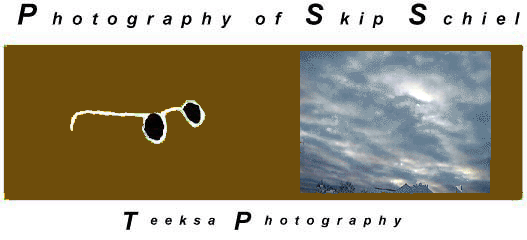 |
